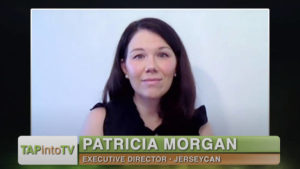One of the most popular soundbites one hears from those who oppose public charter schools is that they push out students with disabilities and English Language Learners—or don’t accept them in the first place. In Newark, New Jersey’s largest charter sector, Superintendent Roger León regularly cites this rationalization as part of his campaign to shrink the footprint of these independent schools.
For example, in his attempt to halt the expansion of seven of Newark’s most successful charters, León wrote about Uncommon Schools’ North Star Academy, ““The data shows that North Star is not addressing the educational needs of Newark’s most vulnerable students.”
A new working paper proves him wrong. According to “The Effect of Charter Schooling on Student Mobility and Classification Status” by Allison Gilmour, Colin Shanks, and Marcus A. Winters, Newark students who enroll in charter schools are less likely than students in traditional district schools to disenroll, including students with disabilities and English Language Learners.
In other words, the accusation by León and others (NJEA, Education Law Center, NJ Policy Perspective) is a myth.
Let’s look more closely at the study, which comes from Boston University’s Wheelock Center for Education and Human Development. Why did the researchers undertake this work? They write,
Numerous anecdotes of charter schools inappropriately discouraging unwanted students from applying (“cream skimming”) or encouraging struggling students to leave for a different school (“pushing out”) have led to the concern that charter schools are systematically failing to meet their legal and moral obligation to educate all students. This report addresses these concerns through careful data analysis of student enrollment and mobility, i.e., how often students move from school to school.
First, a few caveats.
- The researchers used data from 70% of Newark’s charter schools which educate 85% of students enrolled in charters. They call this “a rich set of data.”
- The district refused to provide the researchers with the algorithm used to assign students to schools, both traditional and charter, through Newark Enrolls so they recreated the assignment mechanism.
- The district refused to share “the rankings of students applying to magnet schools, where admissions decisions could depend on criteria such as auditions, attendance records, or grades.”
- Parents submit a ranked list of choices (both charter and traditional) to the Newark Enrolls system if they want their child to attend a different school. This is most common in kindergarten and ninth-grade, when children typically change schools. (This year León made charter enrollment more difficult for parents by requiring much additional documentation compared to traditional schools.)
Here are the highlights from the researchers’ findings.
- Parents of students with disabilities and English Language Learners are more likely than other parents to submit their ranked list of preference to Newark Enrolls. However, English Language Learners (ELL’s) and Hispanic students “are less likely to include at least one participating charter school on their list than their counterparts” (which explains the lower number of ELL’s in Newark charter schools).
- In contrast, Black parents are more likely to prioritize charter schools on their list of preferences. (This is a national trend; according to this poll, 74% of Black parents support public charter schools. In Newark specifically, 88% of those polled believe that “parents in Newark should have more quality school options than they do right now, including public charter schools.”)
- “As a group, students who participate in Newark Enrolls have below-average standardized math and English and Language Arts (ELA) scores compared to other [Newark Public Schools] students.” (This makes sense too: parents of children who are struggling in school are more likely to want to make a change.)
- The data shows that “enrolling in a participating charter school decreases the likelihood of changing schools for both Hispanic and Black students, but the effect is more pronounced for Black students.”
- And, “[e]nrolling in a participating charter school decreases the probability that a student remains in special education 3 years later by about 20 percentage points for students who entered in Grade 4-6, and by about 31 percentage points for students who entered the participating charter school in Kindergarten through Grade 3.”
In other words, students with disabilities and English Language Learners are more likely to remain enrolled at charter schools and more
likely to improve their English fluency than in traditional district schools. In addition, special needs students who enroll in Newark charters schools are “more than twice as likely to be declassified out of special education within the next two years than those who enter a traditional public school.”
(In an earlier paper, Winters found positive effects of attending a charter school in Newark on the math and reading outcomes of students with disabilities. Another Boston analyst found that enrolling in a charter school led to an increase in the test scores for both students with disabilities and English learners.)
From the report: “Enrolling in a participating charter school decreases the probability that a student remains in special education 3 years later by about 20 percentage points for students who entered in Grade 4-6, and by about 31 percentage points for students who entered the participating charter school in Kindergarten through Grade 3.”
Finally,
We find that enrolling in a participating charter school reduces the likelihood of subsequent mobility for students overall as well as for students with disabilities and Els. We find no statistically significant effect from enrolling in a participating charter school on the mobility of Hispanic students. Further, the relationship between enrolling in a participating charter school and mobility does not differ by the student’s test scores at entry.
Will Roger León et. al. stop spreading the myth about charter schools discriminating against students with disabilities and English Language Learners? Kyle Rosenkrans, Executive Director of the New Jersey Children’s Foundation, isn’t so sure. “I won’t hold my breath for the anti-charter critics to apologize to the hard-working parents, students and teachers at these schools,” he says. “For years, they’ve been told that all their hard work to achieve at the highest levels was a scam because they were kicking out the most vulnerable students. This study is proof of what we already knew: these slanderous allegations were empirically false.”






